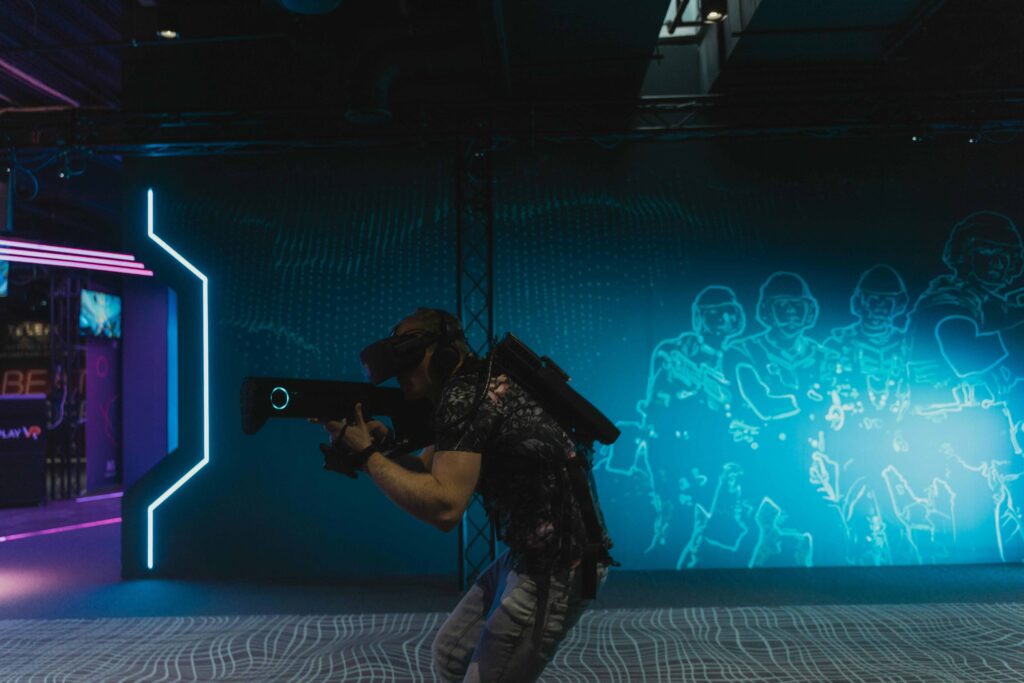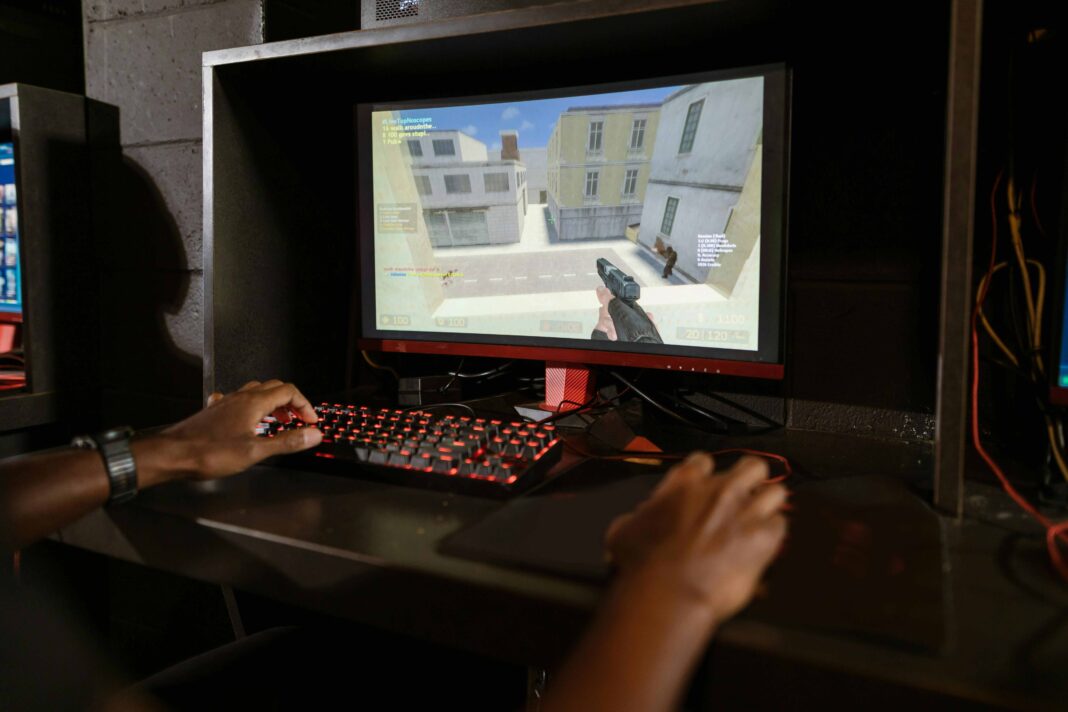Ray tracing has revolutionized game graphics by simulating how light interacts with objects in a virtual environment. Unlike traditional rendering techniques, which rely on approximations, ray tracing calculates the path of light rays in real-time, producing lifelike shadows, reflections, and global illumination. This technology, once reserved for high-end CGI films, is now accessible in modern gaming, thanks to advancements in GPU hardware like NVIDIA’s RTX and AMD’s RDNA 2 architectures.

In this article, we’ll examine how ray tracing works, its impact on gaming visuals, the hardware requirements, and its future potential. By the end, you’ll understand why this technology is a game-changer for realism in video games.
What is Ray Tracing?
Ray tracing is a rendering technique that mimics the natural behavior of light. Traditional rasterization, used in games for decades, approximates lighting effects through pre-baked textures and screen-space tricks. While efficient, it lacks the accuracy of real-world light physics.
Ray tracing, on the other hand, traces individual light rays as they bounce off surfaces, refract through materials, and cast shadows. This method allows for:
- Accurate Reflections: Mirrored and glossy surfaces now show true-to-life reflections, including subtle distortions based on surface roughness.
- Dynamic Shadows: Light sources create soft or hard shadows depending on distance and occlusion, eliminating the “blocky” shadows seen in older games.
- Global Illumination: Indirect lighting (light bouncing off walls and objects) enhances realism by naturally brightening or darkening scenes.
NVIDIA’s RTX GPUs introduced real-time ray tracing to gaming in 2018, followed by AMD’s adoption in 2020. Game engines like Unreal Engine 5 and Frostbite now integrate hybrid rendering, combining rasterization for performance and ray tracing for fidelity.
How Ray Tracing Works in Games
Real-time ray tracing requires significant computational power. Here’s a breakdown of the process:
1. Ray Generation
The GPU shoots rays from the camera (player’s viewpoint) into the scene. Each pixel on-screen corresponds to at least one ray.
2. Ray Intersection
The engine checks where each ray hits objects in the environment. This step determines visibility—whether a surface is directly seen or obscured.
3. Light Calculation
Once a ray hits a surface, the system calculates how light interacts with it:
- Diffuse Surfaces: Matte materials scatter light evenly (e.g., cloth, stone).
- Specular Surfaces: Smooth materials reflect light sharply (e.g., metal, glass).
- Transmissive Surfaces: Light bends when passing through transparent or translucent objects (e.g., water, stained glass).
4. Secondary Rays
To simulate realism, additional rays spawn for:
- Shadow Rays: Testing if a point is in shadow by tracing toward light sources.
- Reflection Rays: Calculating mirrored surfaces.
- Refraction Rays: Determining how light bends through materials.
5. Denoising and Upscaling
Raw ray tracing produces noise (grainy artifacts). AI-powered denoisers (like NVIDIA DLSS or AMD FSR) clean up the image while upscaling maintains performance.
The Impact of Ray Tracing on Game Visuals
Ray tracing elevates immersion by enhancing three key areas:
1. Lighting and Shadows
Pre-baked lighting can’t adapt to dynamic changes (e.g., moving objects, time-of-day shifts). Ray-traced shadows adjust in real-time, creating:
- Penumbra Effects: Soft edges where light partially leaks.
- Contact Hardening: Shadows grow sharper near the object casting them.
- Self-Shadowing: Fine details (like chainmail or hair) cast micro-shadows.
2. Reflections
Screen-space reflections (SSR) only show what’s on-screen, causing artifacts when objects leave view. Ray-traced reflections:
- Display off-screen objects.
- Accurately distort curved surfaces (e.g., car hoods, puddles).
- Blend roughness levels (e.g., brushed metal vs. polished marble).
3. Global Illumination (GI)
Traditional GI uses light probes or voxels, which often appear flat. Ray-traced GI:
- Simulates color bleeding (e.g., a red carpet tinting nearby walls).
- Adjusts instantly to destructible environments.
- Enhances natural lighting in open-world games.
Hardware Requirements for Ray Tracing
Ray tracing demands powerful hardware. Key considerations:
1. GPU Requirements
- NVIDIA RTX 20/30/40 Series: Dedicated RT cores accelerate ray calculations.
- AMD RX 6000/7000 Series: Ray Accelerators in RDNA 2/3 enable competitive performance.
- Minimum Recommendation: RTX 2060 or RX 6600 for 1080p ray tracing.
2. CPU and RAM
- A modern 6-core CPU (e.g., Ryzen 5 5600X, Core i5-12600K) prevents bottlenecks.
- 16GB RAM is standard; 32GB improves performance in open-world titles.
3. Upscaling Technologies
- DLSS (NVIDIA) / FSR (AMD): Boosts frame rates without sacrificing quality.
- XeSS (Intel): An alternative for Intel Arc GPUs.
The Future of Ray Tracing in Gaming
Developers are pushing ray tracing further with:
- Full Ray Tracing (Path Tracing): Replacing rasterization entirely (e.g., Cyberpunk 2077 Overdrive Mode).
- AI-Optimized Rendering: Faster denoising and neural graphics.
- Console Adoption: PS5 and Xbox Series X|S support ray tracing, expanding accessibility.
FAQ
1. Does ray tracing lower FPS?
Yes, ray tracing is computationally expensive. Enabling it can halve performance without upscaling (DLSS/FSR).
2. Which games support ray tracing?
Popular titles include:
- Cyberpunk 2077
- Control
- Minecraft RTX
- Spider-Man: Miles Morales
3. Is ray tracing worth it?
If you prioritize visual fidelity and own a capable GPU, yes. Competitive gamers may prefer higher FPS over graphics.
4. Will ray tracing replace rasterization?
Not soon. Hybrid rendering (ray tracing + rasterization) balances performance and visuals.
Conclusion
Ray tracing marks a leap forward in gaming realism, offering unparalleled lighting, shadows, and reflections. While demanding on hardware, technologies like DLSS and FSR make it more accessible. As developers refine implementation, ray tracing will become standard, blurring the line between games and reality.
For gamers seeking cutting-edge visuals, investing in an RTX or RDNA 2/3 GPU is the next step. The future of gaming graphics is here—and it’s illuminated by ray tracing.

